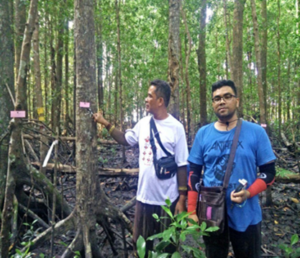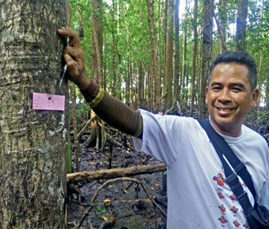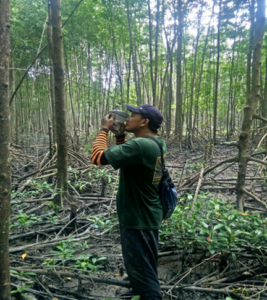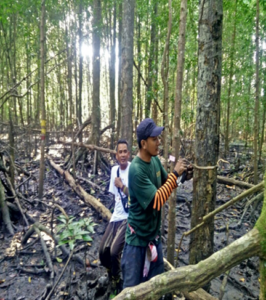By Md Rodila Ibrahim
Mangroves are forest ecosystems in tropical and subtropical regions along coastlines and estuaries. They offer numerous ecosystem services, including acting as a natural barrier against storm surges and erosion, providing habitat for various marine species, storing carbon, and cycling nutrients. Mangroves are critical for maintaining the health and productivity of coastal ecosystems. The loss of mangrove habitats can significantly impact local fisheries. Protecting and restoring mangroves is essential for the long-term sustainability of coastal ecosystems.
The intertidal zone is a vital and intricate ecosystem essential to the health and sustainability of coastal environments. Understanding and protecting this ecosystem to maintain biodiversity and ecological functions is necessary.
Mangrove modelling is a valuable tool for comprehending the complex interactions between mangrove ecosystems and their environment. These models can simulate mangroves’ response to changes in environmental factors and predict the effects of climate change and human activities on these ecosystems. There are three main types of mangrove models: process-based, empirical, and agent-based or individual-based models (IBMs). Process-based models simulate physical, chemical, and biological processes, empirical models use statistical relationships, and IBMs simulate individual organisms and their interactions.
Mangrove modelling is a valuable tool that can inform management and conservation decisions for mangrove ecosystems. It can help identify areas suitable for mangrove restoration, predict the effects of sea level rise, and evaluate management strategies to control invasive species or mitigate human activities.
Matang Mangrove Forest Reserve in Malaysia covers 40,000 hectares. It is managed through a 30-year crop rotation system, including clear-felling, natural regeneration, and enrichment planting. The reserve is home to diverse flora and fauna, including rare and endangered species. The forest provides important ecosystem services and is an exemplary sustainable conservation and management area.
IBM simulations called mesoFON were used to analyse the dynamics of the R. apiculata species in the Matang Mangrove Forest Reserve (MMFR). Data on tree height, diameter at breast height, and species identity were collected above ground at different ages in the study area. Soil samples were collected at different layers but in the same area to analyse nitrate and phosphorus levels. Before collecting the data from above and below ground, four plots with a size of 10m by 10m were randomly built. All data, from above and below ground, were used to calibrate the model before simulation.
This IBM simulation using the mesoFON model found that planting more than 20,000 saplings is highly suitable for reforestation. The number of saplings planted affects various factors such as tree height, stem size, density, biomass, and total seedling mortality. The average death rate of saplings due to competition also significantly impacts the total number of saplings.


Labelling tree species


Height and diameter measurements
Individual-based models (IBMs) have several limitations to be considered, such as computational resources, data requirements, parameterization, and interpreting results. Nonetheless, monitoring mangrove growth is crucial for understanding the health and resilience of coastal ecosystems. It can also also inform policies and management practices to help protect these valuable ecosystems.

Copyright © INOS | Institute of Oceanography and Environment | Universiti Malaysia Terenganu | 2024. All rights reserved.